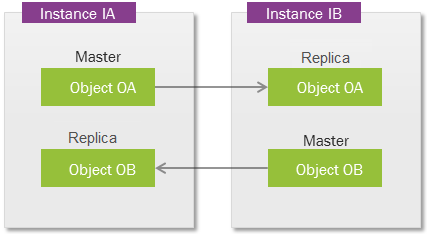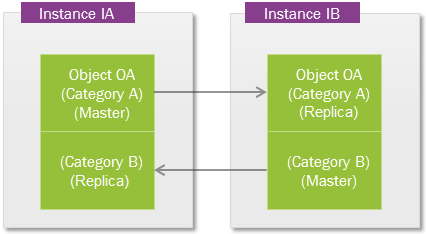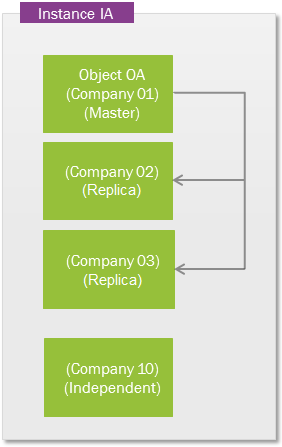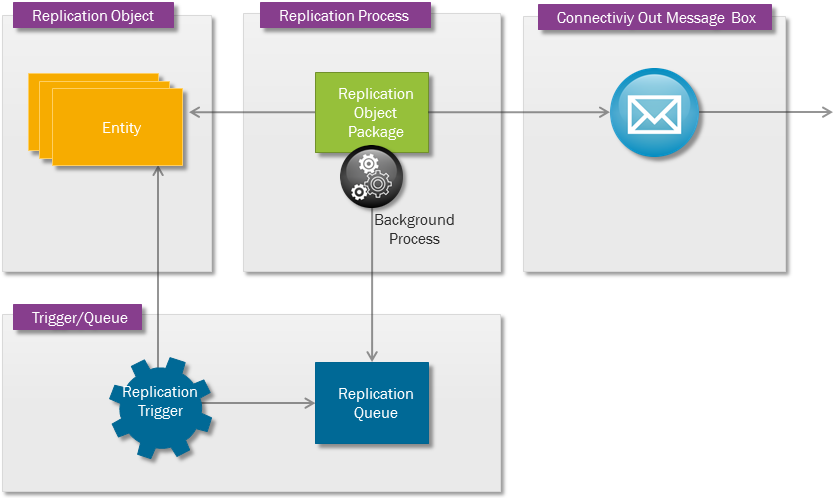
Replication makes it possible for several installations of IFS Applications to share basic data. One instance of IFS Applications can be the owner (master) of some basic data and other instances (replicas) can share the masterís data. Whenever data is created or modified at the master site the data is replicated to the replicas and the replica instances are updated.
The concept of master/replica is not limited to instances of IFS Applications but can be configured on a replication object level. Instance IA can be master for object OA and instance IB (and IC) can be replicas while instance IB can be master of object OB where IA (and IC) are replicas.

It is also possible to have a master/replica relationship on horizontal slices of data as if instance IA is master for all rows belonging to category A and instance IB is master for all rows belonging to category B (or perhaps all categories except A).

Replication can also be used to replicate data between companies/sites in one instance of IFS Applications.


The replication process builds on a set of predefined replication object definitions. On these definitions an administrator configures the replication setup. The setup holds information about receivers of replicated data and a set of conditions for replication. As a result of the configuration a set of replication triggers and replication object packages is generated and installed into the database.
When replication is installed a set of replication triggers creates rows in a replication queue. Whenever a replicated object is created or modified a row identifying the new/modified object is inserted into the replication queue. The replication background process monitors the queue and when a row is found in the queue the background process invokes a procedure in the replication object package. The replication background process creates a connectivity message containing the replicated data.
Connectivity sends the message containing the replicated data.

The receiving process builds on a set of predefined replication object definitions and information received from the master site. On these definitions an administrator configures the receive setup. The setup holds information about senders of replicated data and a set of conditions for received data. As a result of the configuration a set of replication object packages is generated and installed into the database.
When connectivity receives a message with replicated data a procedure in the replication utility package is invoked. The utility package in turn invokes the replication object package and the data is applied to the database using the standard methods in the receiving logical units.